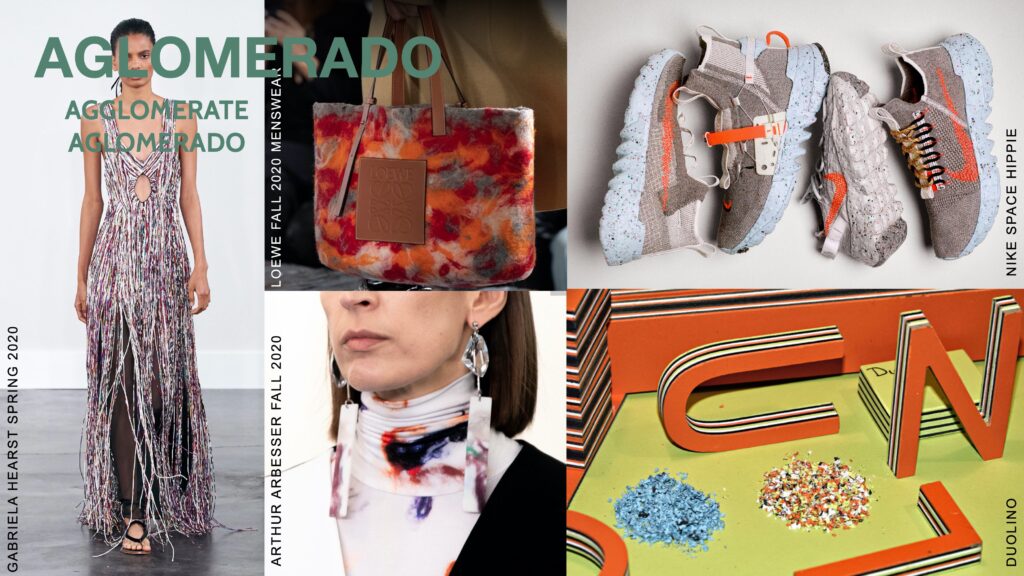

By Walter Rodrigues
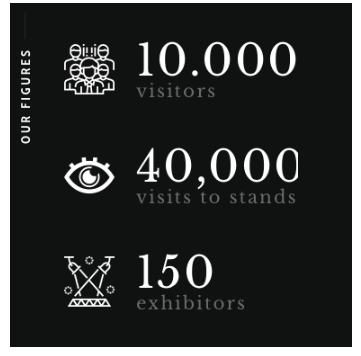
Inspiramais digital continues promoting the fashion market in Brazil, South America and the world. In this first digital edition, there were more than 10,000 visitors, with 50 countries interacting, with more than 100 participants in the hall, 31 conferences and 6 projects in parallel.


“Presence is the key, now is the answer, ego is not who you are…how has humanity been taken in by this for so long?”
The soundtrack of the show repeated over and over again
In a time filled with polarities, it is clear that it is no longer just clothes, but rather aesthetic and cultural concepts that will determine whether consumers want comfort, glamour or freedom.
ZEN – 60% GLOBAL CONTEXT

“When Apple released the iPhone without the power button, it created a totemic metaphor for the nature of our time. By removing the power button and the frame that once surrounded the screen, the phone’s surface became unbounded and limitless. The message was clear: there is no longer a boundary between your screen and the world around it.” Excerpt from 032c magazine editorial.
This text reveals a new line of thought. Although based on the wonders of technology, it intuits that we should reflect on “being” human. The constant pressure of the fashion industry for profit and the fact that brands have shifted their target to focus on marketing implode the magic of creation. This stance exhausts discourses, forces a constant invention of new trends, and trivializes creation to continue selling.
However, although it shows signs of tiredness, this behavior has no date to end. Today it is important to resign to profit. It is an attitude that presupposes the conscience of others and the respect for individuality, showing that the essential is something that benefits both companies and consumers. Some signs can already be detected though.
The strength of “design mentality”, the feeling of well-being above nonsensical is avant-garde, conscious consumption, responsible choices, and even a new interpretation of human beauty are ongoing. The most powerful image of the Paris Fashion Week in September 2018 was Balenciaga’s fashion show. A 2000-square-meter LED-panelled tunnel projected images into all spaces, throwing models into a limitless reality. Floor, walls and ceiling exploded in lava, numbers, and glows. The models floated. Regardless of how technological the images were, the human being was the most important point there.
On September 20th, 2018 in Milan, Miuccia Prada explained her choices, saying she wanted to break the rules of the classic, discuss a wish of freedom, and liberation, and fantasy, juxtapose it against the extreme conservatism that is coming the duality out there. Another point visible on the catwalks around the world is the redefinition of the concept of beauty. The times of white, thin and European-looking models as an example of beauty are over. The catwalks have embraced the diversity of skin colours, body shapes, and ages.
The way the materials drape and the strength of the essential and timeless designs determine a fresh – gentler and delicate – outlook, indicating a time of contemplation. Inspired by the need to rethink processes involving the manufacturing and disposal of materials and products, we have come to the conclusion that designers are responsible for the entire process.
They must be careful not to make mistakes: after all, waste generation
can already be considered a design error. The importance of research on materials recycling, the correct use of waste, and the circular systems indicate new paths of enchantment for fashion, pointing to the success of brands with purpose. The sea, the surface of the Earth and the human that transits through them are connected, thus creating new models of exploration and care, looking to the future.
This contemplative and conscious attitude symbolizes a new state of soul. In it, nature and humans are no longer antagonistic, but rather similar. Ultimately, we live on the planet and are part of it. And we, the humans, will have to learn to stop being consumers and become “users.” The main rule of this new order is to be present.
It is to participate and interact in 360 degrees, in all the interfaces of a product, such as the planning, creation and execution of an idea. After all, design does not work miracles.

THE ZEN LINK
The value of the connections is what determines the power of the link. In this way, we can always imagine a story, in the product chain, that connects materials and supplies with components, and components with fashion products, which, in turn, connect with consumers. If we understand the creation of fashion products as a great interconnected process, we will realize that delighting final consumers starts from the very beginning, from the materials and supplies, and not just at the time of the creation and manufacture of final products.


Hence, in the theme of Link, it takes a special ability to work pragmatically with design, combining technique and responsibility, thinking of sustainable processes, such as ‘Zero Waste’, a design technique devised to use up all materials, leaving no waste. Circular thinking and the importance of the value chain strengthen and always communicate the union of the sectors in an intelligent way. Unique textures, shapes and finishes must be observed as a starting point for the creation of products.
Pure and simplified lines, renewed and personalized geometric volumes reflect rationality in the process, resulting in a creation that is respectful to the materials, which are exalted for their quality and origin. Here, being always present in the creation of the product reflects the conviction of building all stages by interrelating them, without design errors.
THE ZEN TIME
Today, we can already measure the recent legacy of humanity through the marks we find on planet Earth.

It is full of antagonisms. We have evolved and learned to live in inhospitable places, creating cities, growing food and multiplying. Nevertheless, on the other hand, we have dumped garbage into the sea, cut down forests and deserti-fied vast areas, without even feeling detrimentally affected by such actions. It is time for us to rethink processes and discover new formulas for harnessing what already exists.



It is time for us to restructure the way in which design will point out solutions, strengthening the idea that sustainability is the new quality standard. This sense of dilemma is present in all projects involving production: how is it possible to be sustainable and still make a profit?
How can we manufacture more without losing the chance to leave for future generations a place for them to live?! Examples of this concern are beginning to be seen more and more often.
Prada, among many other companies, is making heavy investments in the Re-Nylon project, which produces a material created from the reuse of fibre’s discarded into landfills across the United States. By bringing together activists and scholars to introduce this new product, the brand creates empathy with final consumers, and consequently a buying desire.
In the theme of Time, the power of everyday details, such as wear or use marks, are important keywords to create textures, finishes, prints and shapes. The action of time on surfaces serves as inspiration for organic shapes with corroded, rusty, fossilized-looking textures with a subtle greasy-looking shine. In addition, the colourful particles of waste agglomerates re-signify impasses, creating new pathways of hope, creativity and, of course, enchantment!
WORLD CONTEXT SYNCRONY – 30%
THE SPEED OF INFORMATION
References: Renaissance – 14th to 16th centuries – as a line of thought. In the Renaissance, the ‘humanists’ emerged, who were intellectuals concerned with humans from various points of view. Everything that affects the human being – such as morality, society, urbanism, arts, medicine, engineering, and science – becomes an object of interest, study, works, and questioning. Reason, according to Renaissance thinking, was a manifestation of the human spirit that brought the individual closer to God.

In exercising their ability to question the world, humans simply gave vent to a God given gift (Neoplatonism). Today: Artificial intelligence, connectivity, networks, the future is now, scientific developments, such as in medicine and computer science, and the relentless search for answers have transformed today’s people into unfettered questioners.

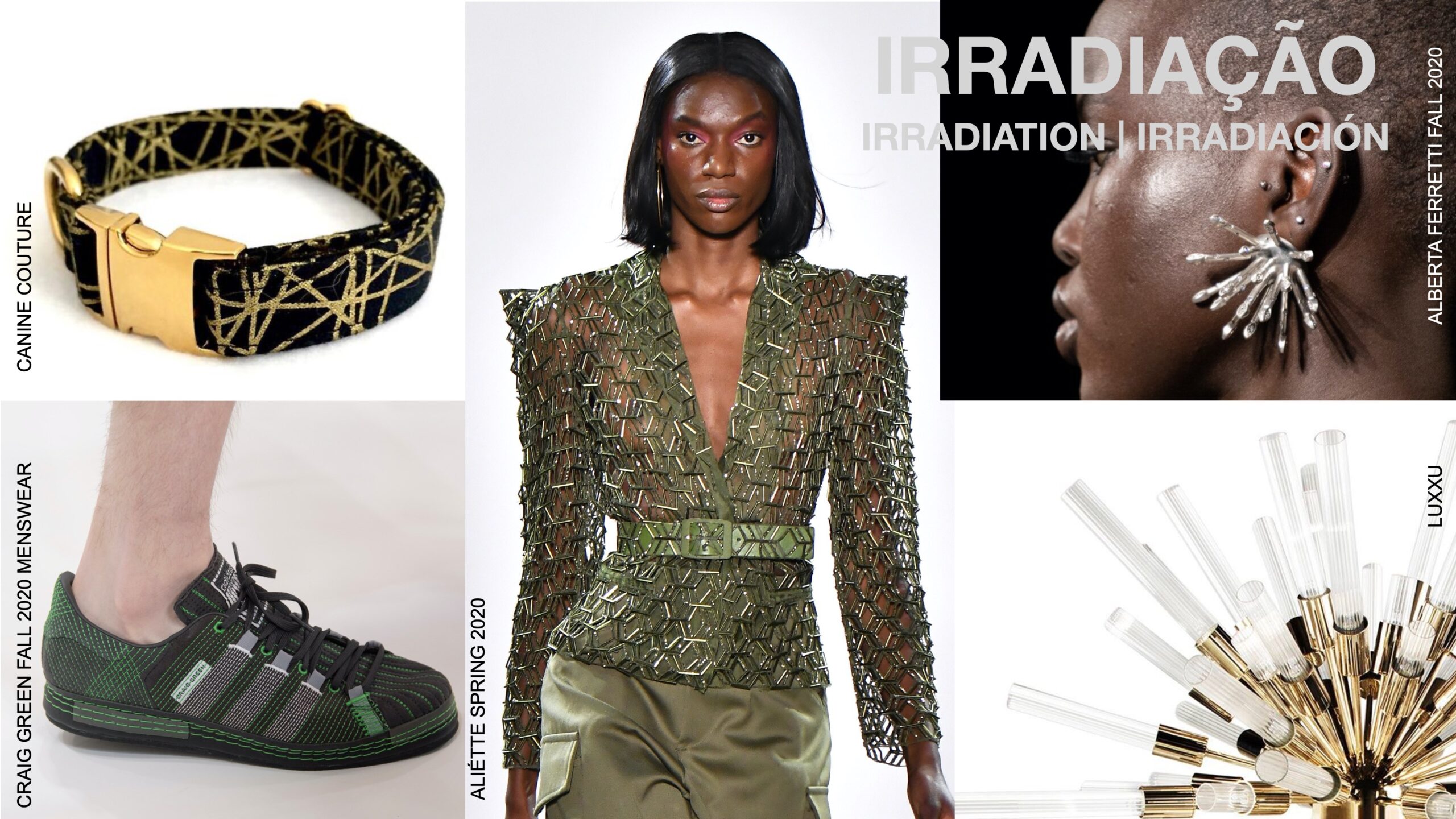

SYNCHRONY 30%
Currently, in the mass industry, the figure of the robot emerges in the front row of a fashion show, on magazine covers and mainly in the digital world, presenting, for example, Lil Miquela, a digital influencer that promotes brands such as Prada, among others, and has 2.6 million followers on Instagram. Recently, the luxury brand Balmain created a controversy when it presented its new collection featuring a cast of virtual models. The boundaries between the real and the virtual are increasingly undefined. In Brazil, companies like Bradesco, Oi and Magazine Luiza use, with great success, virtual models in their campaigns.
In the natural cycle of fashion references, it is normal to return to them when we are impacted by issues present in our daily lives, such as the Internet of Things, Industry 4.0 and robotization. At the same time, the virtual universe and the universe of robotization are increasingly merging with the human and the organic, reaching concepts of cyborgization of humanity as described mainly by authors such as Donna Haraway. We can see that happening in the realm of prostheses, or even in virtual assistants such as our smartphones and technological gadgets.
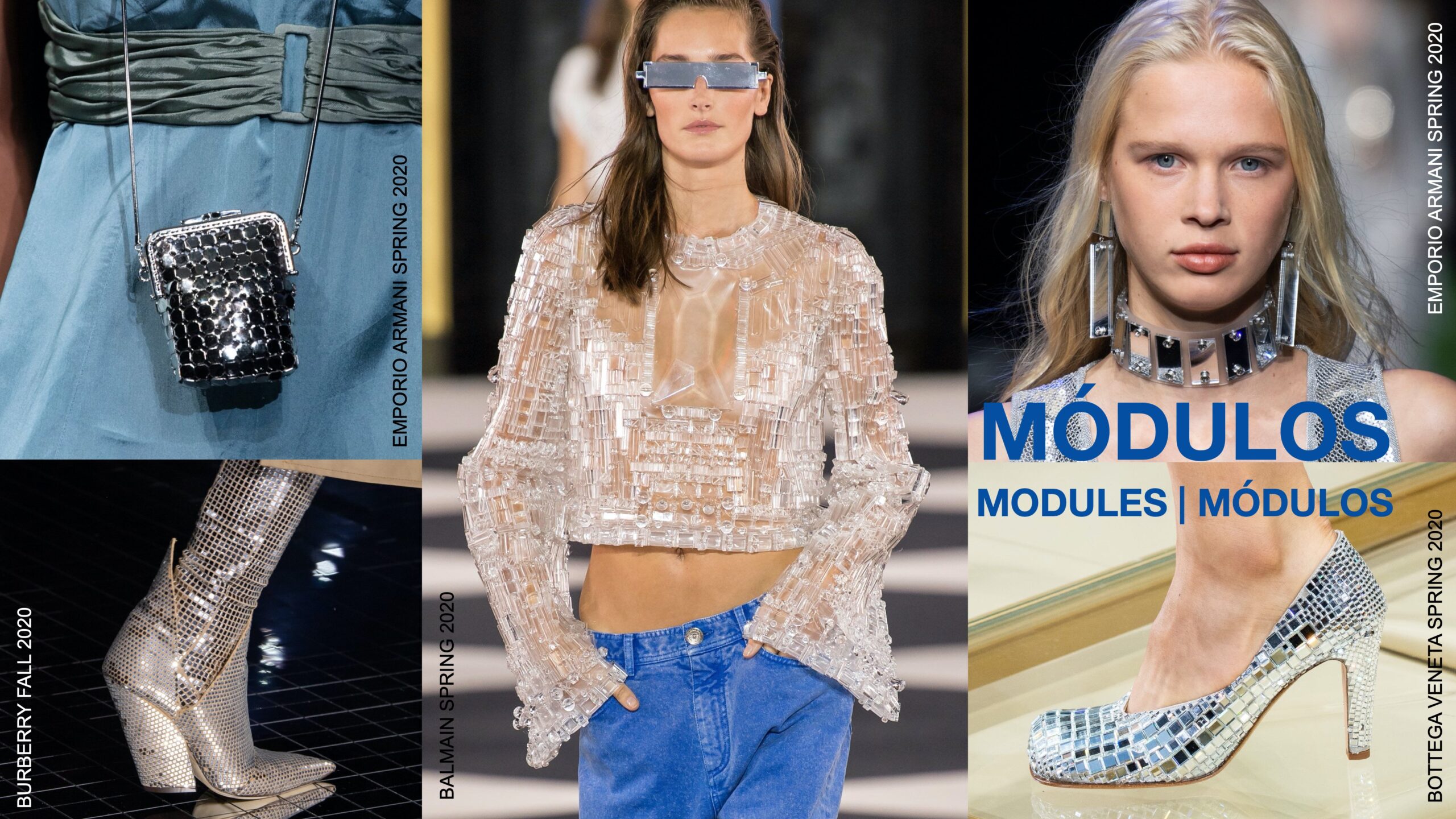






ECLECTIC
How can we forget the widow Porcina from the famous Brazilian soap- opera Roque Santeiro, for example? And still today you can recognize many like her out there, can’t you? This artificiality that camouflages and, at the same time, reveals signs of pessimism and disenchantment insists on exacerbating the colors and the opulence of the shapes, evincing a strong theatricality.
In 1968, writer Susan Sontag wrote her famous article Notes on Camp. In this acclaimed article, Sontag analyzes the behavior of that time, which we must understand as a moment of great expansion of wealth and strengthening of the American middle class, driven by the postwar period. This society, entranced by the new concepts created through marketing actions, was fascinated by the tail-finned Cadillacs, the novelty of synthetic fibers and anything else created from plastic. Its idols reflect this same information.
So, Cher, Liberace, with his extravagant outfits, Elizabeth Taylor and her giant diamonds, paved the way for the next generations, such as Elton John, Divine and Ru Paul and his Drags. In colorful and baroque Brazil, I dare say that we were born camp. We just have to cast our minds back to the Portuguese royal court, Carnival, the vedettes, pornochanchada, TV host Chacrinha, Elke Maravilha, and even the Tropicalismo movement. They all reflect this behavior. It is easy to mistake camp for tacky.
However, there is a detail in this confusion: while tacky is popular, simplistic and exciting, camp is ironic, artificial and intellectual. This intellectuality expressed by camp is visible today in the work by Alessandro Michele, chief designer of the prestigious Gucci brand, who, over the last few years, has revolutionized and greatly increased the company’s profits with his out-of- the-ordinary aesthetics. Therefore, all that ends up impacting us and becoming inspirations.
Here in the subtheme of Eclectic, we build an understanding of the importance of artificiality in terms of colors and materials, in the pressing need to express our feelings almost as a performance, with a certain amount of affectation, in an eloquent contrast to the previous subtheme. Here, the opulence, exaggeration, eccentricity, and exoticism so present in the looks of the sixties will have an influence on colors, raw materials, finishes, and textures.
The experiences carried out in the last Inspiramais Connection edition are the basis for the development of materials emphasizing the main points of Synchrony, which are the perfect combination of technological evolution – such as the internet of things, robotization and sustainability – with the human being. The latter, filled with libertarian feelings, has the chance to think and create using their hands, no longer using them just for repetitive movements.
Metal aspects and modules gain space in national and international collections signaling the Synapse – related mood. In colors, shapes and finishes, it is clear that materials are heading towards a path of opulence for materials on the Eclectic theme.
FREE SPIRIT 10%
What are we going to use from here?

We’ve been having great conversations, emotional conversations, about fashion lately. We talked about creativity, inclusion and community, longevity and sustainability, respect and kindness – what we believe in and why! These very important values, today are being expressed and demonstrated in action by long established international, brands and new brands around the world – which influence the market by generating consumer trends. It is like a reconstruction of fashion thinking, generating new business models to face the demands of our time.
These demands reflect on the emergence of a new way of consuming, emphasizing reuse through the upcycling, resale and rental of fashion products, incorporation of services, things that no one imagined a decade ago. And the question that always remains is: how are we going to keep industries and people’s work going?
We must find a balance between the values expressed in profit and emotional value – conscientious, one that reflects the way new consumers coming to market are thinking. If on the one hand we still have the fast fashion market, with its voracity somewhat diminished today, we also have designers who are at the centre of attention, producing exuberantly creative work, with a strong appeal to traditions, to manual work, adding a sense of value and timelessness to the products, indicating a longer life for these objects.




So, we believe, that the “creativity” somewhat forgotten in these times of high volumes and stratospheric profits – has today become an important word.
Reusing materials, setting goals for circular processes, putting new rules into practice for future uses of materials in virgin states, disseminating the culture of organic products, shaping a new design culture – for all of this we will have to be more creative.
We are in a moment of (r)evolution, and in the spirit of the time period, an energy very similar to that of the 1970s permeates. This decade was also a re-establishment of the system, when fashion changed with the establishment of prêt-à-porter, the emergence of countercultures and street style and more affordable commercial flights connected the world even more.
VALUES
The post-revolution of young people in 1968 in France changed the way fashion was created and commercialized, taking the desires and expectations of young people of that decade into account. Today, we are experiencing similar emotions; there is an ongoing reorganization of thinking and fashion that is consistent with new values such as sustainability and transparency, all important topics for this new generation of consumers now coming to the market.
“Later, other consumers will romantically subvert their choices, embarking on sensory experiences of colour, volume and shapes, worshiping the different and the unusual. This time in isolation, lack of nature, the work routine and daily routine in the same space – and a good dose of escapism strengthened the meaning of these keywords: New Romantics, Botany, Psychedelic Botany, Artsy.”





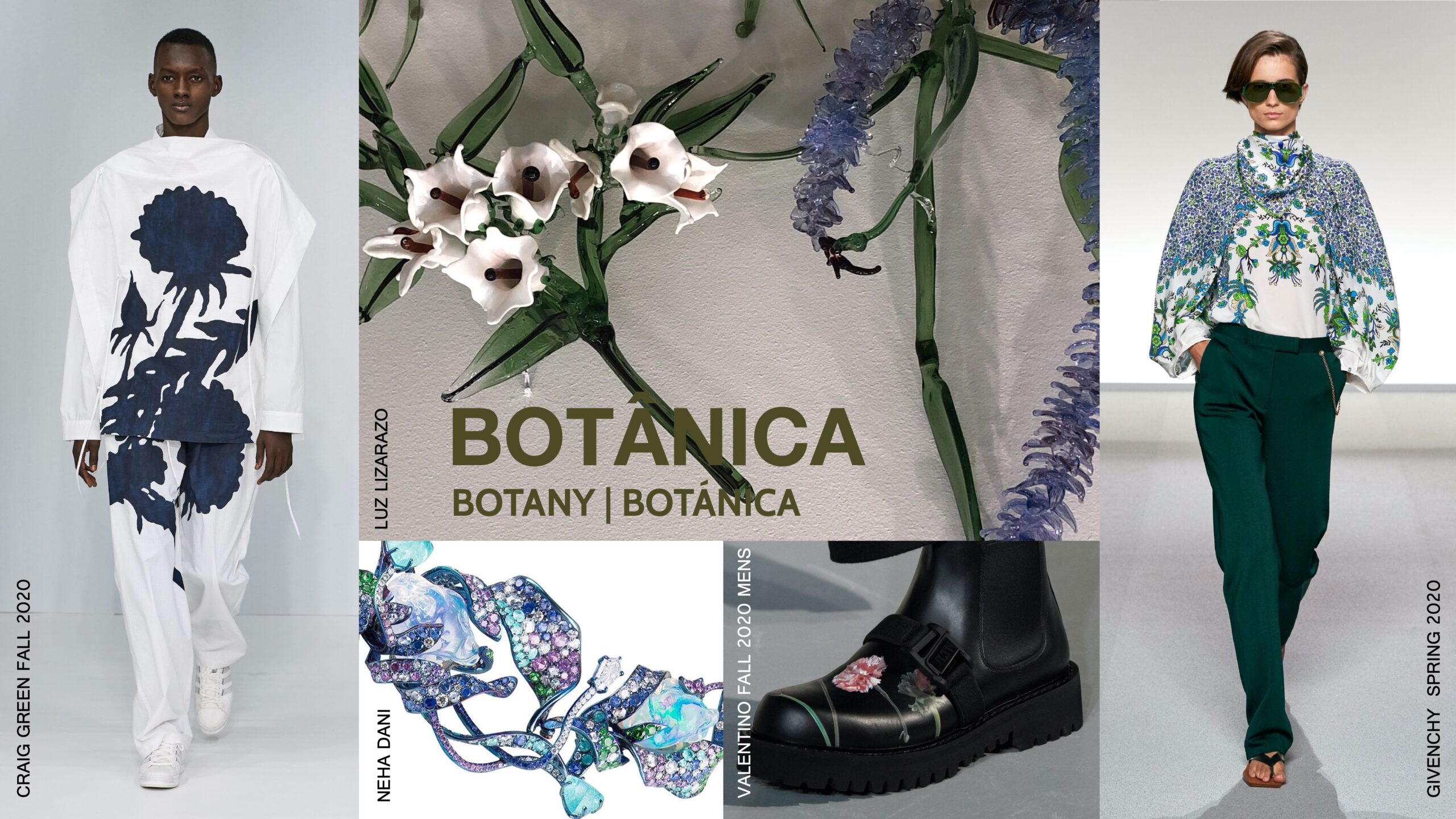


Thus, for 2021 II, we show not only aesthetic trends, but also understanding consumer behavior, positioning strategies, and especially a lot of inspiration. We see that the most important thing now, regardless of the plan to be followed, is to be creative, to be open to seeing what no one has seen yet, to see beyond.
Inspiramais Connection will help you do that!



